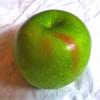Neat. Ingestion of Methylene blue
1. Increased cognitive function and grip strength of old mice to nearly that of young mice.
2. reduces MAO activity, MAO activity increases in human brains with age.
3. Increases protein content in the brains of old mice.
4. Reduces the amount of water and food consumption in older mice.
After drinking 250 uM of MB in drinking water, brain concentration of MB was 128 nM, which is near the optimal concentration of 100nM.
It would have been fantastic to see if the same effects were seen in young mice, and to see whether there was a life-extending effect from MB.
Methylene Blue Induces Mitochondrial Complex IV and Improves Cognitive Function and Grip Strength in Old Mice
Authors: (Afshin Gharib, Hani Atamna, Children's Hospital Oakland Research Institute (CHORI), California, and others)
Abstract:
Methylene blue (MB) is very effective in delaying cellular senescence and enhancing mitochondrial activity of primary human embryonic fibroblasts. At nanomolar concentrations, MB increased the activity of mitochondrial cytochrome c oxidase (complex IV), heme synthesis, cell resistance to oxidants, and oxygen consumption. MB is the most effective among the many agents that has been are reported to delay cellular senescence. We extended these in vitro findings to the investigation of the effect of long-term intake of MB in old mice. We administered MB, in the drinking water (250 μM), to old mice for 90 days. In vivo, MB prevented the age-related decline in cognitive function and spatial memory. MB also prevented the age-related decline in grip strength. Interestingly, MB resulted in 100 % and 50 % increases in complex IV activities in the brains and hearts of old mice, respectively. The age-related decline in protein content of the brain was prevented by MB. We also found a 39 % decrease in brain monoamine oxidase (MAO) activity in old mice treated with MB while aging or MB did not affect the activity of brain NQO1. Our findings suggest that the in vitro model for cell senescence may be used for fast and reliable screening for mitochondria-protecting candidate agents before testing in animal models. The study also demonstrates simultaneous enhancement of mitochondrial function, improvement of the cognitive function, and improvement of grip strength in old mice by a drug. Since these are three major concerns in human aging, MB may be a useful agent for delaying neurodegeneration and physical impairments associated with aging.
https://www.novapubl...oducts_id=24925
























































